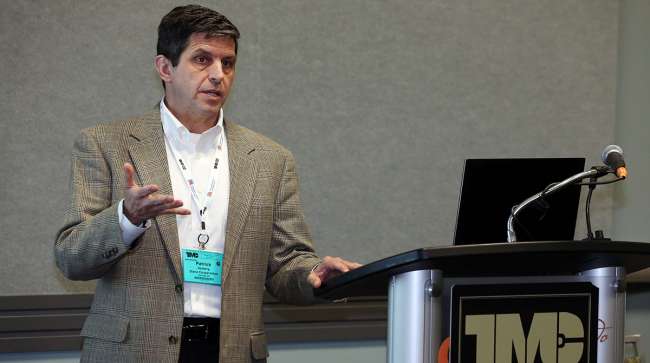Features Editor
TMC Study Group Tackles Considerations for Adopting Electric Trucks

[Stay on top of transportation news: Get TTNews in your inbox.]
ORLANDO, Fla. — During a study group presentation on the implementation considerations for electrical terminal tractors, Patrick Seeberg, senior global product planning manager at Dana Inc., began with a simple question.
“What do I do to electrify?” Seeberg started. “We have moved past the point of should we, to now where we should start investigating and become familiar with various technologies and talk to other fleets about this.”
The study group he led, S.11 Sustainability & Environmental Technologies, was part of American Trucking Associations’ Technology & Maintenance Council’s 2022 Annual Meeting & Transportation Technology Exhibition March 7.

Learn about real-world adoption strategies for self-driving trucks with Robert Brown of Spartan Radar and Charlie Jatt of Waymo. Hear a snippet above, and get the full program by going to RoadSigns.TTNews.com.
Seeberg stressed the need to learn from early adopters’ successes and failures for smoother implementation. Potential fleets and trucking companies, he said, should weigh out certain considerations for battery-electric vehicle applicability (BEV) such as which duty cycles have the highest potential for conversion to electric.
“We really have to start looking at infrastructure — working with municipalities, working with fire marshals and finding out what’s it going to take to bring in the power sources,” he said. Seeberg noted that the typical process of implementation may take as long as 18 months’ time.
Seeberg also recommended that fleets investigate internally by assessing warehouse versus port specs. He offered examples of considerations such as whether port application may pose vehicle and charging durability barriers, or how challenging it would be to map out a port charging facility based on coverage. Seeberg added other considerations, such as how the age of a facility would impact infrastructure improvements.
He also recommended addressing budget concerns including how many trucks are being considered for a BEV fleet, the current state of electrical service and the costs involved in having a charger station on-site.
Seeberg finished the group presentation by recommending refinements to a fleet’s business case for BEV by investigating other needed resources such as suppliers’ relationships and how they can affect the ability to introduce electric vehicles. He also recommended looking into the return on investment and the probability of meeting expectations to eventually come to a “go, no-go” decision.
Want more news? Listen to today's daily briefing below or go here for more info:


&uuid=(email))


